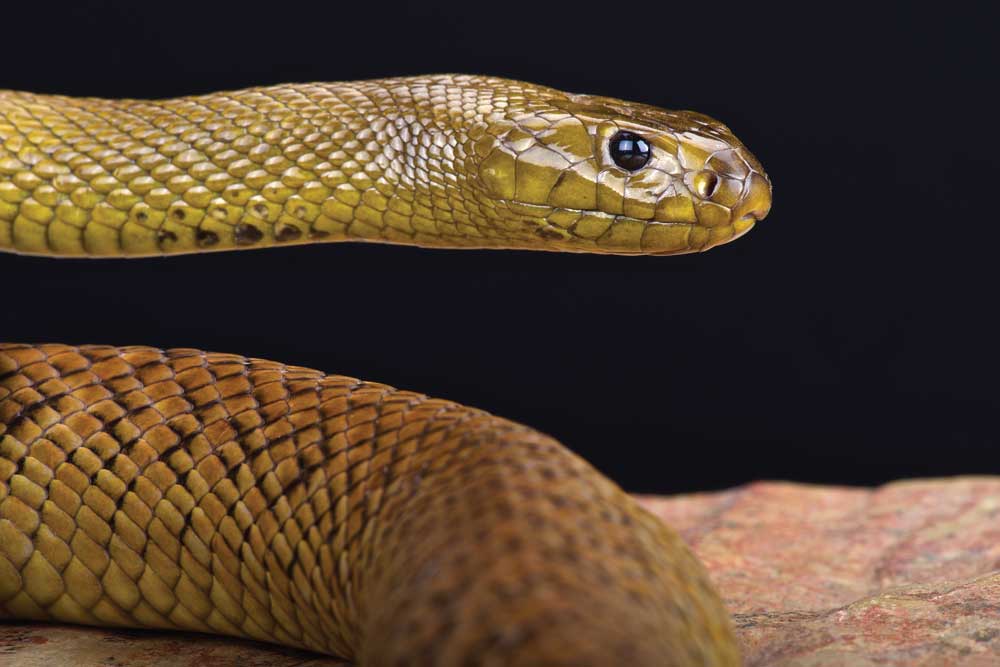It is considered to the world’s most toxic snake based on the median lethal dose value (MLDV) in mice.
The inland taipan snake (Oxyuranus microlepidotus) is considered the most toxic snake in the world, yet there is no record of the snake’s bite ever killing a human being. Here are some facts about this venomous snake from Australia.
1. The inland taipan snake is a venomous snake native to Australia and can be found in semiarid regions of central East Australia.
2. It is considered to the world’s most toxic snake based on the median lethal dose value (MLDV) in mice. The median lethal dose value is a fancy way of measuring the lethal dose of a toxic substance like snake venom. It is the dose that required to kill half of tested population of an animal, such as mice. The average quantity of venom the inland taipan snake delivers is 44 mg. While it has a smaller venom yield than the coastal taipan, the inland taipan snake’s venom is nearly four times as toxic. One bite from the snake has enough venom to kill 100 fully grown humans.

The inland taipan snake is also known as the fierce snake. Photo by reptiles4all/Shutterstock
3. While it is considered to be the most toxic snake in the world based on its venom and MLDV, it has yet to be attributed to a death of a human. This could be due to its reclusive nature and the fact that it is found in some of the remotest areas of Australia. Compare this with deaths by rattlesnake species in the United States. Virtually all bites on humans from the inland taipan snake occurred on herpetologists who were handling the venomous reptile.
4. The venom of the inland taipan is comprised of neurotoxins, which disrupt the nervous system; Hemotoxins which have negative effects on blood; Mycotoxins, which affect the muscles; And possible other toxins that affect the blood vessels and kidneys. Contrast this with other venomous snake species that have hemotoxic venoms but no neurotoxins, or have neurotoxic venoms but not hemotoxic venoms.
5. The inland taipan snake averages about six feet in total length, with some exceeding that by several feet.
6. In the wild, the inland taipan snake eats small mammals, including long-haired rats, plains rats, and the introduced house mouse. According to Bryan Fry, Professor of Toxicology at University of Queensland whose Ph.D research was on the evolution of taipan venoms, the inland taipan does not bite once and then retreat. Rather, the snake bites multiple times, which he says increases the odds of a prey item being overwhelmed by the venom. Fry also says that the inland taipan has evolved because its prey items, which include the aforementioned rodents, can cause significant damage to the snake.


